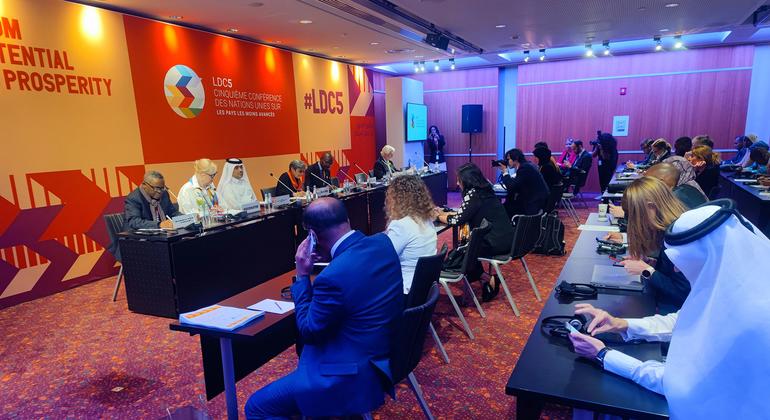As requested by the DPoA, the UN Secretary-General will submit a report outlining the mapping of existing initiatives, possible new modalities, resource requirements, accreditation, and sustainable sources of funding. “This initiative, along with the other education goals and ambitions of the Doha Programme can equip millions of young girls and boys to become agents of transformative change, though newfound innovation and entrepreneurial skills.” While academic institutions in developed countries were able to move quickly to online education, LDCs were unable to make the switch due to a lack of the necessary logistics, technological tools, and skills.
“Each year, the programme offers up to 50 full scholarships to eligible students from LDCs. These scholarships, supported by the university and the government, enable the students to study industrial design and cultivate their problem-solving skills,” Mr. Luo said at an exhibition showcasing the students’ industrial design productions.
Pandemic widens education gaps
“Each year, the programme offers up to 50 full scholarships to eligible students from LDCs. These scholarships, supported by the university and the government, enable the students to study industrial design and cultivate their problem-solving skills,” Mr. Luo said at an exhibition showcasing the students’ industrial design productions.
The COVID-19 pandemic has exposed a major fault line in the education system, particularly in the LDCs. UNESCO‘s Global Survey of Higher Education, published in July 2021, found that the pandemic had affected 220 million tertiary students worldwide. In LDCs, almost all universities were forced to close completely. “I therefore echo the Secretary-General’s call, as he urged development partners to reverse budget cuts, and to dedicate at least 15 per cent of official development assistance to education,” said Ms. Fatima. The professor explained that the long-term goal of the programme is to build the capacity of the world’s 46 LDCs in science, technology, and innovation (STI), which will contribute to the achievement of the SDGs. Notwithstanding progress in increasing enrolment rates for primary education, 16.2 per cent of children of primary school age were out of school in least developed countries (LDCs) in 2019 and almost half of children out of school worldwide are in those same countries, with girls, children with disabilities and other children in vulnerable situations disproportionately represented. During the side event, Member States, international organizations, civil society groups, the private sector and youth representatives discussed the political and financial support needed to establish an online event. Luo is the Dean of the International School of Design, Ningbo Innovation Centre, Zhejiang University (ZJU-ISD). The International Design Education (IDE) programme initiated at his school is dedicated to providing industrial design education to students from LDCs in order to enhance the capacity and competitiveness of LDCs in industrial design. She explained that the main objectives of the proposed online university were to: Enrolment and completion rates for tertiary education remain low, which has far-reaching implications for the structural transformation agenda of the least developed countries. Most of them depend on aid for their education budgets. At the secondary and tertiary levels, gender disparities and disparities for the poorest and most vulnerable exist.
